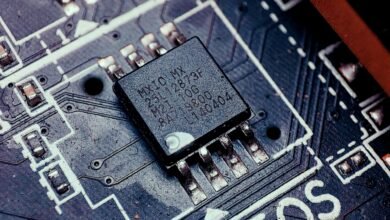IoT and Palletizing Technology: Revolutionizing Logistics and Warehousing

In the dynamic landscape of logistics and warehousing, the convergence of the Internet of Things (IoT) and palletizing technology is paving the way for unprecedented efficiencies and innovations. As global trade continues to expand and consumer expectations rise for faster delivery times, companies are turning to IoT solutions to streamline operations and enhance productivity. This article delves deeply into the integration of IoT with palletizing technology, exploring its benefits, applications, challenges, and future prospects.
What is IoT?
The Internet of Things (IoT) is a network of interconnected devices that communicate with one another via the internet. These devices can include a wide range of sensors, machines, and software applications capable of collecting, sending, and receiving data. The primary goal of IoT is to create smarter environments by enabling devices to gather insights from their surroundings and make data-driven decisions. Key components of IoT include:
- Sensors and Actuators: Devices that collect data (e.g., temperature, weight, motion) and can trigger responses.
- Connectivity: Communication protocols that allow devices to transmit data (e.g., Wi-Fi, Bluetooth, cellular).
- Data Processing and Analytics: Systems that analyze data to generate actionable insights.
- User Interfaces: Dashboards and applications that enable users to interact with IoT systems.
The Importance of Palletizing Technology
Palletizing is a critical process in logistics that involves stacking goods onto pallets for easier storage and transportation. Efficient palletizing is essential for several reasons:
- Space Utilization: Proper palletization maximizes warehouse storage space, allowing for more efficient use of vertical and horizontal areas.
- Reduced Damage: Properly palletized goods are less likely to be damaged during handling and transport, reducing costs associated with product loss.
- Streamlined Operations: Automated palletizing systems can enhance throughput and reduce labor costs, allowing companies to meet higher demand without sacrificing quality.
However, traditional palletizing methods can be labor-intensive, slow, and prone to human error. This is where the integration of IoT technology can make a significant difference.
How IoT Enhances Palletizing Technology
The integration of IoT into palletizing technology can dramatically improve efficiency, accuracy, and overall performance in logistics operations. Below are several key ways IoT enhances palletizing processes:
1. Real-Time Monitoring and Data Collection
IoT-enabled palletizing systems utilize sensors to continuously monitor various parameters such as:
- Weight: Ensuring that pallets are not overloaded, which can lead to damage during transportation.
- Dimensions: Verifying that products are correctly sized for their pallets, preventing issues with loading and unloading.
- Orientation: Ensuring that items are placed correctly to avoid shifting during transport.
By collecting and analyzing this data in real time, businesses can ensure that their palletizing processes are operating at optimal levels and address any issues immediately.
2. Automated Decision-Making
One of the most significant advantages of IoT in palletizing is the ability for systems to make automated decisions based on real-time data. For example, if sensors detect that a pallet is becoming too heavy, the system can automatically redistribute the load or alert operators to intervene. This reduces the need for manual adjustments and improves overall workflow efficiency.
3. Enhanced Traceability
IoT technology provides unparalleled traceability throughout the supply chain. Each pallet can be tagged with a unique identifier, such as a QR code or RFID tag, allowing businesses to track its movement from the warehouse to the end customer. This traceability enhances inventory management, optimizes routes, and ensures timely deliveries, all while providing valuable data for analysis.
4. Predictive Maintenance
IoT devices continuously monitor the condition of palletizing equipment, predicting when maintenance is necessary. By analyzing data from sensors, businesses can identify potential issues before they lead to equipment failures. This proactive approach reduces downtime, extends equipment life, and minimizes costly repairs, ultimately leading to greater efficiency in operations.
5. Improved Inventory Management
By integrating IoT with palletizing systems, businesses gain real-time insights into inventory levels and storage conditions. This visibility helps companies optimize stock levels, reducing excess inventory while ensuring that they can meet demand. For instance, if a specific product is selling rapidly, the system can prompt the replenishment of that item, ensuring availability without overstocking.
6. Increased Flexibility and Scalability
IoT-enabled palletizing systems can adapt to changing demands and varying product types with ease. For instance, if a business introduces a new product line, IoT technology allows for the quick reconfiguration of palletizing operations to accommodate different sizes and weights. This flexibility ensures that companies can scale their operations without significant delays or disruptions.
7. Enhanced Safety Protocols
IoT technology can significantly enhance safety in the palletizing process. Sensors can detect potential hazards, such as excessive weight on a pallet or improper stacking. Alerts can be sent to operators to address these issues before they lead to accidents or injuries. Additionally, automated systems can minimize human intervention in dangerous environments, further improving workplace safety.
Future Trends in Palletizing Technology
As we look ahead, several future trends in palletizing technology are expected to shape the logistics landscape. The integration of advanced robotics, AI-driven analytics, and enhanced automation will redefine how businesses approach palletizing, ensuring greater efficiency and accuracy. These advancements will be bolstered by IoT technology, creating smarter and more adaptable systems.
Challenges and Considerations
While the benefits of integrating IoT with palletizing technology are substantial, there are also challenges that businesses must consider:
1. Security Risks
With the increasing connectivity of devices comes potential cybersecurity risks. IoT systems can be vulnerable to hacking, data breaches, and other malicious activities. Businesses must invest in robust security measures, including encryption, firewalls, and regular software updates, to protect sensitive data.
2. Integration Costs
Implementing IoT solutions can require significant upfront investment in new technologies, sensors, and training for staff. Companies must weigh these costs against the potential long-term benefits to determine the feasibility of IoT integration.
3. Data Management
IoT devices generate vast amounts of data, which can be challenging to manage and analyze. Businesses need effective data management strategies to ensure that they can harness the full potential of IoT. This may involve investing in advanced analytics tools and hiring data specialists to interpret the data.
4. Compatibility with Existing Systems
Integrating IoT solutions with existing palletizing equipment and software can present compatibility challenges. Companies must ensure that new systems can communicate effectively with legacy systems to maximize efficiency.
Related: AI Ethics: Navigating the Complexities of Artificial Intelligence
Future Prospects of IoT and Palletizing Technology
As technology continues to evolve, the future of IoT in palletizing technology looks promising. Several trends are expected to shape the industry:
1. Increased Adoption of Artificial Intelligence (AI)
The combination of IoT and AI will further enhance palletizing processes. AI can analyze data from IoT devices to optimize workflows, predict demand, and identify patterns that humans may overlook. This synergy will lead to smarter, more efficient logistics operations.
2. Enhanced Robotics Integration
Robots equipped with IoT technology will play a more significant role in palletizing operations. Automated guided vehicles (AGVs) and collaborative robots (cobots) will work alongside humans to improve efficiency and safety in warehouses.
3. Sustainable Practices
As sustainability becomes a critical focus for businesses, IoT technology can help optimize palletizing processes to reduce waste and energy consumption. Smart systems can monitor and adjust operations to minimize environmental impact, aligning with corporate social responsibility goals.
4. Greater Customization and Personalization
IoT technology will enable businesses to offer more customized palletizing solutions tailored to specific client needs. This level of personalization can lead to enhanced customer satisfaction and loyalty.
Conclusion
The integration of IoT technology into palletizing processes marks a significant advancement in logistics and warehousing. By enhancing efficiency, accuracy, traceability, and flexibility, IoT transforms traditional palletizing methods into smart, automated systems that respond dynamically to real-time data. As businesses continue to adopt IoT solutions, the future of palletizing technology promises even greater efficiencies and innovations, ultimately paving the way for more streamlined and effective supply chain operations.
In an increasingly competitive global market, embracing IoT and palletizing technology is not just an option but a necessity for businesses aiming to stay ahead. The potential for improved operational performance, cost savings, and enhanced customer satisfaction makes it a critical investment for the future of logistics and warehousing.







